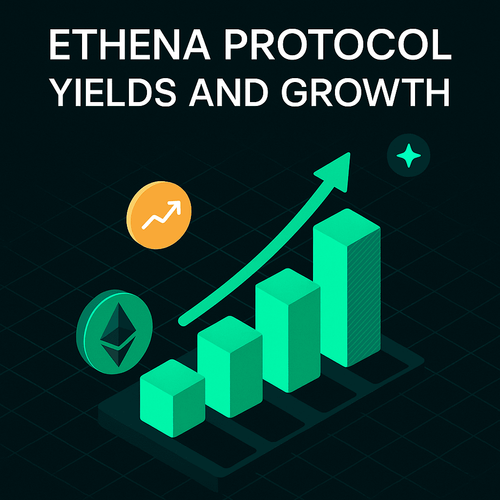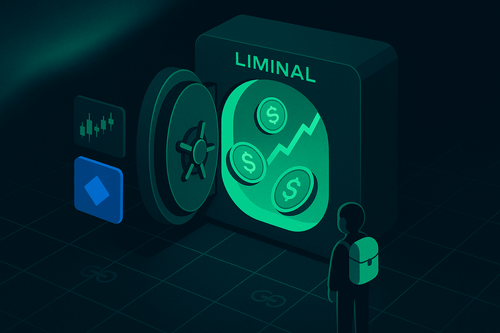Introduction
This report examines ETH holders in various cohorts, defined by their native ETH holdings throughout 2023 onward. We provide dashboards to actively navigate the market, particularly, questions such as:
- Are whales accumulating ETH?
- What are the growing trends of chain preference across different ETH cohorts?
- Top entities used by different ETH cohorts?
We try to answer these questions by looking into address counts, ETH balances, top counterparties, the velocity of transactions across different chains, and some underlying behaviors over time. The main driver of this analysis is to follow the same wallets cross-chain. We calculate our wallet cohorts based on their cumulative balances of native ETH holdings across the following EVM chains:
- Ethereum
- Arbitrum
- Optimism
- Polygon
- Base
- Linea
We do not include LSDs or ETH staking, so other ETH exposure may be left out of the findings.
Our Approach
For this analysis, we aimed to narrow down our results to just Externally Owned Accounts (EOAs). To do this, we filtered out most contracts, exchanges, MEV bots, NFT wash traders, and any wallets belonging to an entity as labeled by Nansen (with the exception of public figures: we would not want to miss Vitalik’s on-chain activity for example!).
After we applied our filters, we defined our ETH cohorts. Starting from “Less than 1 ETH”, we moved up by a factor of 10 as shown below:
- Less than 1 ETH balance cross-chain
- 1-10 ETH
- 10-100 ETH
- 100-1,000 ETH
- 1,000 - 10,000 ETH
- 10,000 - 100,000 ETH
- 100,000+ ETH
Given the traction of some popular L2s, it made sense to adopt a cross-chain approach when tracking wallet cohorts. We summed up the native ETH balances across all of these chains on a weekly snapshot and grouped the wallet addresses into the above ETH cohorts. We then studied various quantitative cross-chain trends for these cohorts, such as:
- 30-Day Net Balance Change
- Address Count
- Velocity of Transactions across Different Cohorts
- Minnows vs Sharks vs Whales Behavior
- Top Entities Used Per chain
ETH Cohort Balances and Address Counts
First, we explored the net ETH balance and address count changes among these segments/cohorts. In other words, we asked: which segments are accumulating or presumably selling ETH?
We visualized the 30-day net change in ETH balances across these segments below. Users can drill down on specific segments to see their 30-day net balance change through the dashboard.
30-Day Net ETH Balance Change
The above chart shows 30-day net balance changes, grouped by each ETH Cohort - some may be positive and others negative. Note, the chart shows balances of native ETH, so the outflows we see may be aimed at liquid staking derivatives (LSDs) or other Defi protocols where these addresses put their ETH to work, without necessarily selling ETH. For reference, the total ETH locked in the staking contract at the start of 2023 was 17.59m whereas today, there is over 30.21m ETH staked, signaling over a 72% increase in ETH staked. Given this, all outflows should not be treated as selling given addresses may use non-native ETH alternatives to have exposure to ETH, as the staked ETH growth reflects. Zooming out, the aggregate netflows across all cohorts were only a 12% decrease in 2023.
We monitored 30-day net balance changes but what do ETH holdings look like across our cohorts? In other words, how distributed is the ETH supply amongst our whales and smaller players?
Total ETH Balances Per Cohort
In general, the cohorts sitting above 10k ETH represent over 50% of ETH holdings. This does not mean whales control ETH; foundations, multisigs, protocols, treasuries, and other types of addresses are likely included. As for addresses with “Less than 1 ETH”, they only account for 1.48% of ETH across the segments.
Next, we want to explore these ETH cohorts individually and their address counts over time.
Cumulative Address Counts
In contrast to ETH balances, the number of addresses paints a very different picture of our cohorts. Smaller (“Less than 1 ETH”) ETH balance cohorts represent the lion's share of addresses. When moving up the cohorts, the address counts decrease considerably.
We have looked at the ETH balance and address counts of these cohorts, but it doesn't cover anything related to these addresses' activity. Wallets can be dormant or some cohorts less active than others and ultimately which chains they prefer.
Transaction Velocity Across Chains
Every address had an equal weighting in this analysis, and we filtered out addresses with an average of 0 transactions per year on each chain to focus on “active” wallets. We calculated the average annual number of outgoing transactions for an address on each chain, and normalized over the period since its first recorded activity. Note, that there could be bias in comparing the annualized average of outgoing transactions for addresses with different lifespans but in general, this can show the true activity of these cohorts.
Less than 1 ETH
Our lowest ETH balance cohort strongly prefers using L2s over ETH. Since 2022, addresses have sent 3-4x more transactions on L2s than they did over Ethereum mainnet. Regarding preferences, Polygon, Arbitrum, and Linea are the top three L2s. However, given that many of these wallets may be considered “dust wallets”, they may often be forgotten and hence, be considered inactive accounts. This is reflected in the general downtrend of transactions from 2022 onward for these wallets.
1-10 ETH
This cohort is far more active than the ‘Less than 1 ETH’ cohort and also strongly prefers L2s over Ethereum. From May 2023 onward, this segment has shown considerably more activity across L2s with Ethereum mainnet activity declining. The ‘1-10 ETH’ cohort prefers Polygon, Arbitrum, and Optimism.
10-100 ETH
Activity also bottomed in May 2023 for the ‘10-100 ETH’ cohort, dramatically increasing across all chains into 2024. These addresses are far more active than the previous cohorts and their latest top chain preferences are Linea, Arbitrum, and Ethereum respectively.
100-1,000 ETH
Activity bottomed a bit earlier for this segment, in February 2023, and has picked up significantly since then. For context, BTC was trading at around $25k and ETH around $1,200 during this time. This suggests that this cohort’s activity was a bit more leading into the positive price action of the general crypto markets into 2024. This cohort is significantly more active than the two previous cohorts and they most strongly prefer using Polygon, Arbitrum, and Base.
Due to the small number of addresses that have 1,000 ETH+ balances, we combined them all for the visualization.
1,000+ ETH
Whales with over 1,000 ETH are the most active of any group. Ethereum mainnet remains a home base for these wallets with Polygon and Arbitrum at a distant 2nd and 3rd place.
We have covered activity across these segments, but what exactly are they doing on-chain and who are their counterparties?
Behaviors
First, we want to map out the general behaviors of these cohorts across chains. The counterparty segments are broken down into high-level categories of “entities”:
- DeFi
- Addresses that fall under Lending, DEX, Derivatives, DeFi, Futures, AMM, Yield Farming, Stablecoin, Payments, Arbitrage, Leverage, Payments, Yield Optimizer, and Borrowing.
- NFT
- Addresses that fall under NFT, NFT Casino, NFT Marketplace, Metaverse, NFT Liquidity, NFT Pool, and GambleFi.
- Scaling
- Addresses that fall under Rollup, Scaling, Cross-Chain, Interoperability, Layer 2, Bridge, L2, and Sidechains.
A wallet may fall under one or more of these categories each day, depending on the individual wallet’s activity. For instance, if an address does a DEX trade on Uniswap today, they will be considered a ‘DeFi User’. Tomorrow the same address can make another DEX trade and buy an NFT, then it would be counted as a DeFi and NFT user for that day. In short, addresses’ actions are grouped for each day and will highlight potential narrative changes over time.
We group our cohorts into 3 groups to simplify our visualizations:
- Fish
- 0-10 ETH
- Sharks
- 10 - 1,000 ETH
- Whales
- 1,000+ ETH
The visualizations below aggregate all chain activity into the ‘Defi’, ‘NFTs’, and ‘L2s/Scaling’. This means that this shows behaviors across all chains for a given segment. It does so by counting the number of addresses that interacted with each action on a daily cadence, from 2023 onward.
Overwhelmingly, the three segments have historically interacted with DeFi applications throughout 2023 into 2024, followed by L2s and Scaling respectively. DeFi remains the key focal point of crypto activity, despite differences in balances.
Following the general behaviors, we would want to drill down further into who exactly are the entities these cohorts are interacting with.
Entity Usage Across Chains
We examined the main entities that specific groups of ETH holders engaged with over the past 90 days, up to February 5th, 2024. For each group of ETH holders, we identified the most frequent entities they interacted with and assigned rankings to these entities. Rankings were assigned based on two criteria: the total number of interactions and, in case of a tie, the number of unique wallets involved. Essentially, an entity's rank reflects its popularity among a particular group of ETH holders across different blockchain networks.
Users can change the inputs of the dashboard to see different results and then click ‘apply changes’ to see the updated data. Do not select more than one option for either as it won't yield results. To illustrate what this looks like, we show the top entities for the ‘10-100 ETH’ cohort on Base, sorted by the unique number of wallets that have interacted with the given entity.
Instead of outlining every top entity, we will let the reader drill down on what they are interested in via the dashboard. It is a snapshot of the last 90 days, starting from February 5th and looking back, so the data will not be in real-time.
A high-level key takeaway is that ETH cohorts tend to use the same entities. Entities with the highest usage by number of unique wallets are Uniswap, Tether, and USDC, showing that the most used entities are consistent across ETH cohorts and chains.
Bringing together our analysis of Ethereum and broader EVM user base throughout 2023 and into 2024, we uncover a narrative rich with strategic shifts and evolving behaviors. The landscape is distinctly marked by the robust presence of DeFi, standing as the dominant use case of on-chain activity.
As we delve deeper, the predilection for Layer 2 solutions emerges as a defining trend, particularly among the smaller balance cohorts. This shift towards scalability and efficiency is not merely a preference but a strategic pivot, reflecting the demand for more accessibility to cheap and abundant block space. The resurgence in on-chain activity, notably post-May 2023, paints a picture of a very active ecosystem with a trend of increased activity across L2s and Ethereum.
The dominance of DeFi interactions across all cohorts serves as a testament to the foundational role of decentralized financial applications. This high level of engagement with DeFi, even as the ecosystem matures with new sectors and innovations, underscores the central thesis of crypto’s on-chain narrative: an accessible and open financial system.




